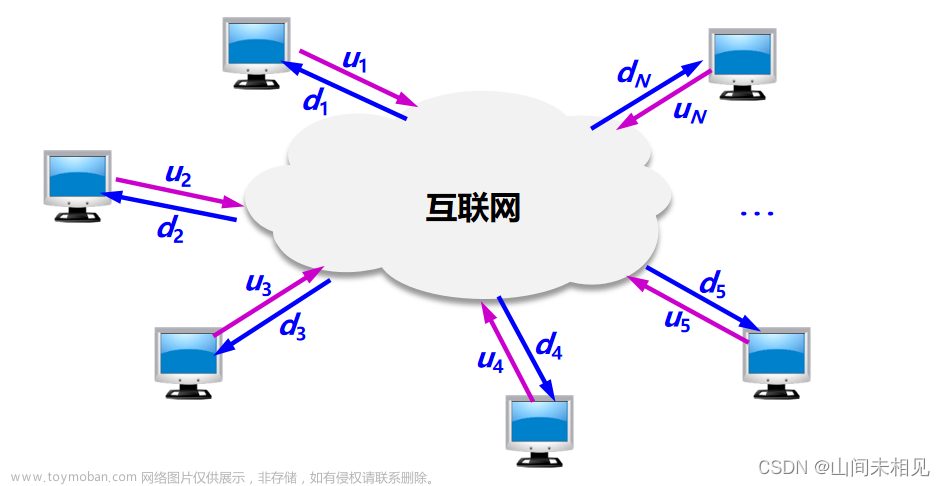WiFi P2P是指通过WiFi直接连接两台设备之间的无线点对点通信,不需要通过路由器或者互联网。这种技术被广泛应用于移动设备之间的文件共享、游戏联机、音乐播放等应用场景中。
WiFi P2P的优点在于可以在没有网络的情况下建立设备之间的连接,同时具有高速和低延迟的特点。它还支持多种语言编程接口,并且使用起来非常简单。
在Android中,WiFi P2P可以通过WifiP2pManager类进行实现,它提供了许多方法来扫描可用设备、建立P2P连接并传输数据等功能。开发者可以通过这些方法来实现设备之间的文件传输等操作。
WiFi和蓝牙是两种不同类型的无线通信技术,在许多方面都有不同的特点和用途。
以下是一些常见的WiFi和蓝牙的比较:
- 传输速率:WiFi传输速度更快,可以达到几百兆比特每秒,而蓝牙通常只能达到几兆比特每秒。
- 距离限制:WiFi的覆盖范围通常更大,可以在较长的距离内进行通信,而蓝牙的覆盖范围通常比较小,仅能在短距离内通信。
- 电池寿命:由于WiFi的功率更大,因此它通常消耗更多的电池生命,而蓝牙通常需要更少的功率,因此它通常耗电更少。
下面是使用Wifi P2P传输文件的基本代码示例,您可以根据需要进行调整:
1. 添加权限和依赖项
在AndroidManifest.xml中添加以下权限:
<uses-permission android:name="android.permission.ACCESS_WIFI_STATE" />
<uses-permission android:name="android.permission.CHANGE_WIFI_STATE" />
<uses-permission android:name="android.permission.ACCESS_NETWORK_STATE" />
<uses-permission android:name="android.permission.CHANGE_NETWORK_STATE" />
<uses-permission android:name="android.permission.WRITE_EXTERNAL_STORAGE" />
<uses-permission android:name="android.permission.READ_EXTERNAL_STORAGE" />
<uses-permission android:name="android.permission.INTERNET" />
<uses-permission android:name="android.permission.ACCESS_COARSE_LOCATION" />
在build.gradle文件中添加以下依赖项:
implementation 'com.android.support:appcompat-v7:28.0.0'
implementation 'com.android.support:design:28.0.0'
implementation 'com.android.support:recyclerview-v7:28.0.0'
implementation 'com.android.support:cardview-v7:28.0.0'
2. 设置布局文件
在布局文件中添加以下代码:
<RelativeLayout
android:layout_width="match_parent"
android:layout_height="match_parent">
<TextView
android:id="@+id/info"
android:layout_width="wrap_content"
android:layout_height="wrap_content"
android:textSize="20sp"
android:textColor="#000000" />
<Button
android:id="@+id/button_search"
android:layout_width="wrap_content"
android:layout_height="wrap_content"
android:text="搜索可用设备" />
<ListView
android:id="@+id/list_devices"
android:layout_width="match_parent"
android:layout_height="wrap_content"
android:layout_below="@+id/button_search"
android:layout_marginTop="20dp"
android:visibility="gone" />
</RelativeLayout>
3. 创建WifiP2pManager和WifiP2pManager.Channel对象
在Activity中定义以下变量:
private WifiP2pManager mManager;
private WifiP2pManager.Channel mChannel;
private BroadcastReceiver mReceiver;
private IntentFilter mIntentFilter;
private List<WifiP2pDevice> peers = new ArrayList<>();
private WifiP2pDeviceListAdapter mAdapter;
在Activity的onCreate()方法中,创建WifiP2pManager和WifiP2pManager.Channel对象:
mManager = (WifiP2pManager) getSystemService(Context.WIFI_P2P_SERVICE);
mChannel = mManager.initialize(this, getMainLooper(), null);
4. 注册广播接收器
在Activity中创建以下BroadcastReceiver对象:
mReceiver = new WifiDirectBroadcastReceiver(mManager, mChannel, this);
WifiDirectBroadcastReceiver是一个自定义广播接收器类,它负责处理与Wifi P2P相关的广播事件。
在Activity的onResume()方法中,注册广播接收器:
registerReceiver(mReceiver, mIntentFilter);
在Activity的onPause()方法中,注销广播接收器:
unregisterReceiver(mReceiver);
5. 开始搜索可用设备
通过调用startDiscovery()方法开始搜索可用设备:
mManager.discoverPeers(mChannel, new WifiP2pManager.ActionListener() {
@Override
public void onSuccess() {
//搜索成功
}
@Override
public void onFailure(int reasonCode) {
//搜索失败
}
});
6. 显示可用设备列表
创建一个自定义适配器类WifiP2pDeviceListAdapter,用于显示可用设备列表中的每个设备:
public class WifiP2pDeviceListAdapter extends ArrayAdapter<WifiP2pDevice> {
private List<WifiP2pDevice> items;
private Context ctx;
public WifiP2pDeviceListAdapter(Context context, int textViewResourceId,
List<WifiP2pDevice> objects) {
super(context, textViewResourceId, objects);
items = objects;
ctx = context;
}
@Override
public View getView(int position, View convertView, ViewGroup parent) {
View v = convertView;
if (v == null) {
LayoutInflater vi = (LayoutInflater) ctx.getSystemService(Context.LAYOUT_INFLATER_SERVICE);
v = vi.inflate(R.layout.row_devices, null);
}
WifiP2pDevice device = items.get(position);
if (device != null) {
TextView top = (TextView) v.findViewById(R.id.device_name);
TextView bottom = (TextView) v.findViewById(R.id.device_details);
if (top != null) {
top.setText(device.deviceName);
}
if (bottom != null) {
bottom.setText(getDeviceStatus(device.status));
}
}
return v;
}
private String getDeviceStatus(int deviceStatus) {
switch (deviceStatus) {
case WifiP2pDevice.AVAILABLE:
return "可用";
case WifiP2pDevice.INVITED:
return "已邀请";
case WifiP2pDevice.CONNECTED:
return "已连接";
case WifiP2pDevice.FAILED:
return "失败";
case WifiP2pDevice.UNAVAILABLE:
return "不可用";
default:
return "未知状态";
}
}
}
在Activity中,设置ListView的适配器:
mAdapter = new WifiP2pDeviceListAdapter(this, R.layout.row_devices, peers);
ListView listView = (ListView) findViewById(R.id.list_devices);
listView.setAdapter(mAdapter);
在BroadcaseReceiver接收到搜索结果后,在Activity中更新设备列表:
@Override
public void onPeersAvailable(WifiP2pDeviceList peerList) {
peers.clear();
peers.addAll(peerList.getDeviceList());
mAdapter.notifyDataSetChanged();
if (peers.size() == 0) {
//没有可用设备
}
}
7. 连接到另一个设备
在设备列表中选择一个设备,并调用connect()方法:
mManager.connect(mChannel, config, new WifiP2pManager.ActionListener() {
@Override
public void onSuccess() {
//连接成功
}
@Override
public void onFailure(int reason) {
//连接失败
}
});
8. 传输文件
在连接成功后,使用WifiP2pGroup.getClientList()方法获取已连接设备的列表,将文件传输到列表中的第一个设备:文章来源:https://www.toymoban.com/news/detail-729087.html
WifiP2pGroup group = (WifiP2pGroup) intent.getParcelableExtra(WifiP2pManager.EXTRA_WIFI_P2P_GROUP);
if (group != null) {
Collection<WifiP2pClient> clients = group.getClientList();
if (clients.size() > 0) {
WifiP2pClient client = (WifiP2pClient) clients.toArray()[0];
File file = new File(filePath);
if (file.exists()) {
try {
FileInputStream inputStream = new FileInputStream(file);
OutputStream outputStream = client.getOutputStream();
byte[] buffer = new byte[1024];
int length;
while ((length = inputStream.read(buffer)) > 0) {
outputStream.write(buffer, 0, length);
}
outputStream.close();
inputStream.close();
} catch (IOException e) {
e.printStackTrace();
}
} else {
//文件不存在
}
} else {
//没有连接设备
}
} else {
//组不存在
}
注意:以上代码仅用于演示如何使用Wifi P2P传输文件,您需要根据自己的情况进行修改。此外,Wifi P2P传输文件的性能可能会受到网络环境的影响,并不适用于大文件传输。文章来源地址https://www.toymoban.com/news/detail-729087.html
到了这里,关于Android WiFi P2P数据传输的文章就介绍完了。如果您还想了解更多内容,请在右上角搜索TOY模板网以前的文章或继续浏览下面的相关文章,希望大家以后多多支持TOY模板网!








